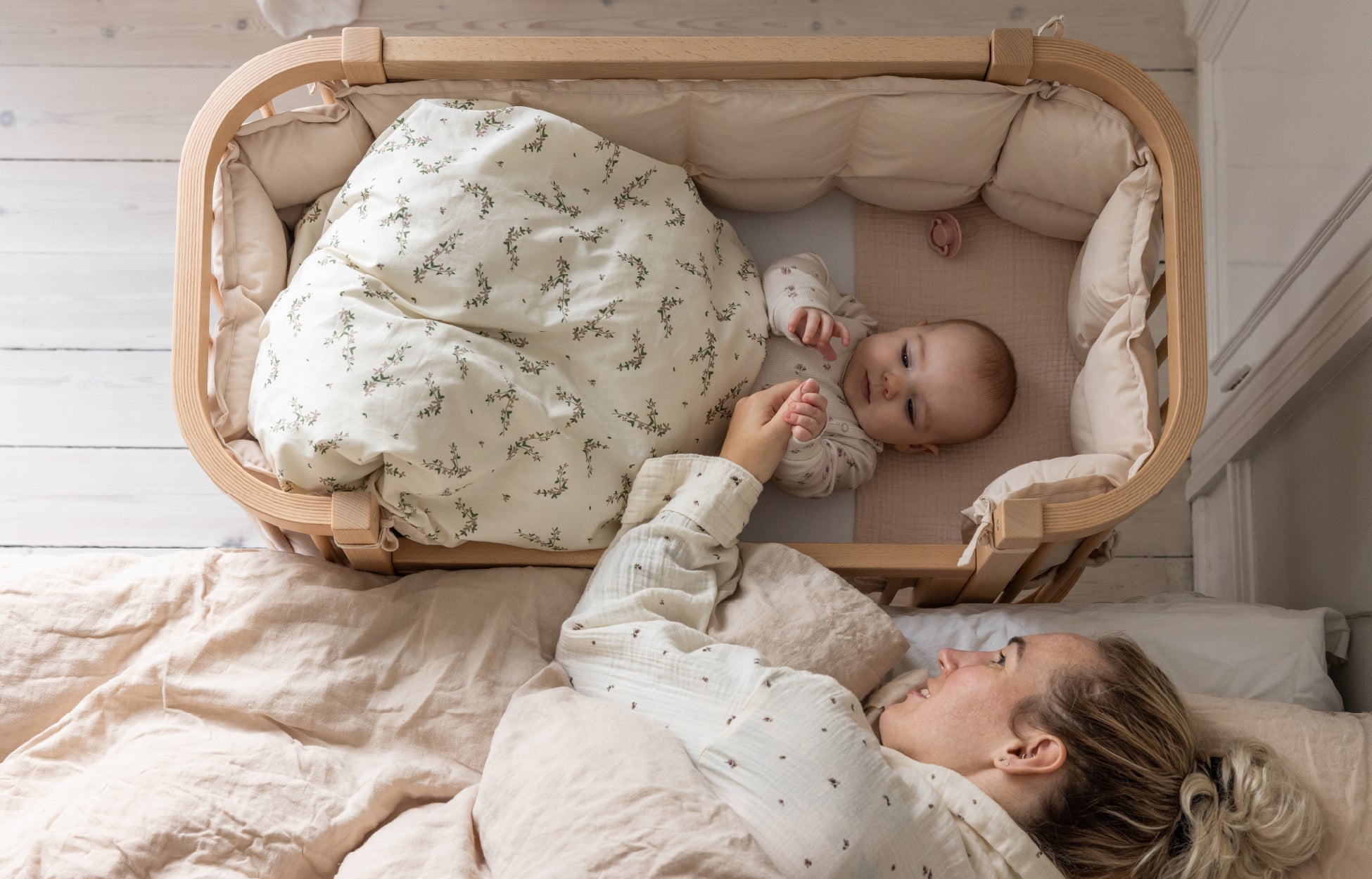Safe Sleep
The Danish Health Authority recommends that it is safest for a young child to sleep in their own bed in the same room as their parents. For example, their bed can be placed at the foot of or next to the parents’ bed.
If your child is restless, place them at the bottom of the bed so they can feel the edge of the bed with their feet. Being able to sense barriers and boundaries reminds the baby of their time sleeping in the safety of the womb. It helps your baby to calm down when they are surrounded by safe hands, a baby duvet or when they can feel the edge of a bed.
When You Are Co-sleeping
If you choose to co-sleep with your child, the child should be positioned between you and the child's own bed. Make sure that there are no gaps for your child to fall into while you sleep.
The bed should have a firm mattress and be wide enough to accommodate both you and your child. The child should sleep with their own duvet and there should be no other siblings (or pets) in the bed that could lie on the child.
Whether your child sleeps in their own bed or in your bed, they should always sleep on their back with their head alternating between right and left sides. This prevents the back or side of the child’s heads becoming flat.
A Good Sleeping Environment
It is important that the temperature in the room where your child sleeps is not too high, as heat is associated with a risk of sudden infant death syndrome (SIDS).
It is recommended that the temperature in the room the child sleeps in is between 18-20 degrees with no draught. It is also important that the child lies on a firm mattress to prevent sinking into the mattress and blocking their airways.
If the child sleeps in their own bed, the mattress should go all the way to the edge of the bed to avoid any gaps that the child could fall into.






